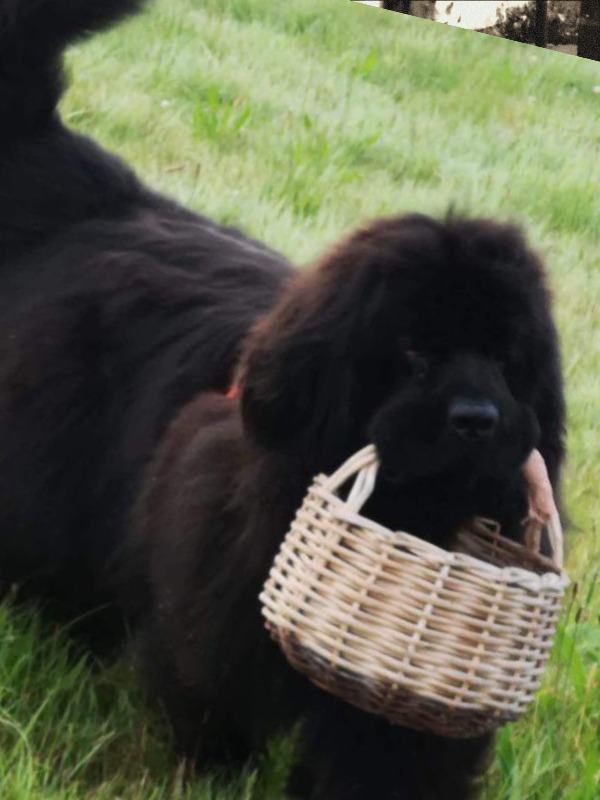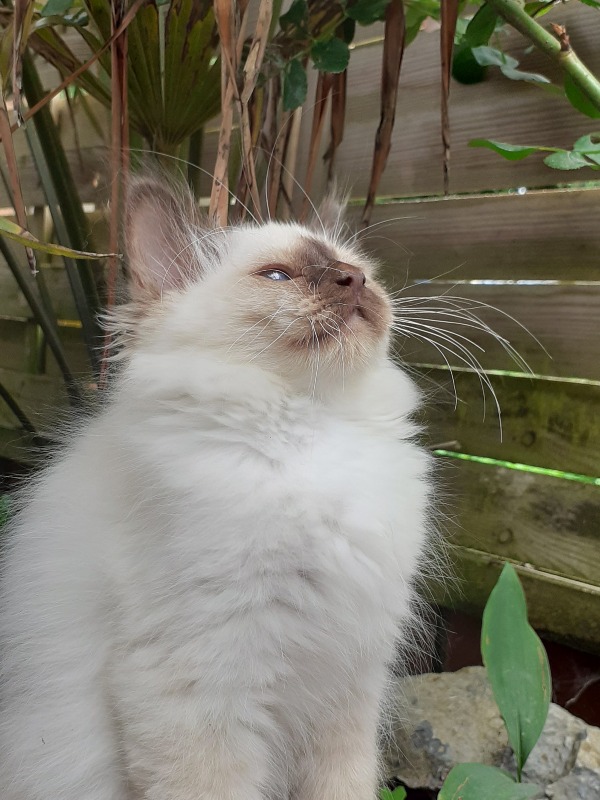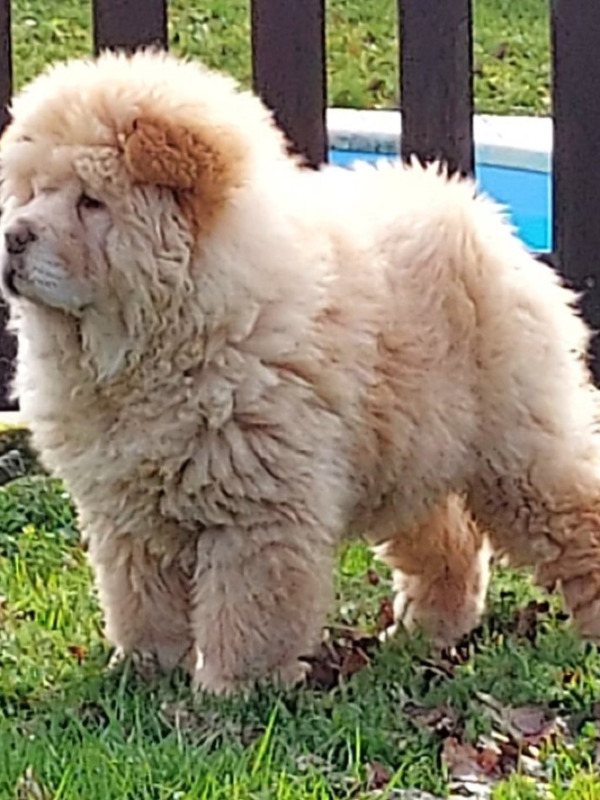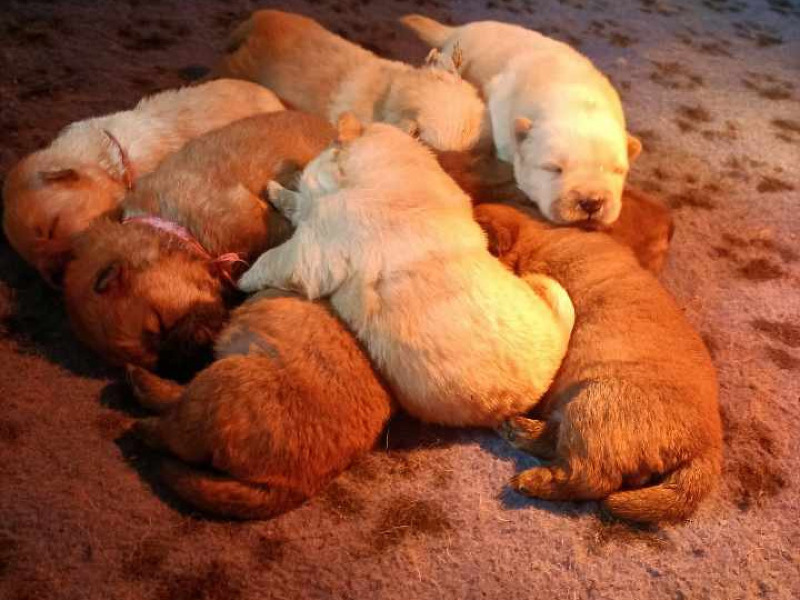Chow-chow
Autres noms : Chow chow panda, Choo, Chow-chow toy
Discover the Chow-Chow, a majestic dog breed with a fluffy coat and distinctive blue tongue. Loyal and protective, this unique companion captivates with its charm and independent nature. Learn more about its needs, temperament, and essential care.
Awareness of acquiring an animal
Adopting or breeding a dog is a responsibility that must be carefully considered. Dogs are loyal companions that require time, attention, and constant care. Whether for leisure, passion, or professional breeding, it is crucial to understand the specific needs of each breed. Provide them with a loving and stimulating environment, and avoid any impulsive acquisition that could harm their well-being. Be a vigilant and committed owner for a happy and healthy companion.
To learn more about animal welfare, we invite you to consult our FAQ by clicking the button below:
Origins and history
The chow chow has its origins in China, where its presence dates back thousands of years. Considered one of the oldest dog breeds, it is often associated with various roles, ranging from guard dog to sled dog and companion animal. Archaeological excavations have revealed representations of dogs resembling the chow chow on pottery dating back to the Han dynasty, showcasing its importance in Chinese culture.
Over time, the chow chow was introduced to other regions of Asia and Europe. In the 19th century, British explorers and merchants brought these dogs to Europe, where they quickly garnered interest for their unique appearance and distinct personality. Their woolly coat and blue tongue are notable characteristics that set them apart from other breeds.
Today, the chow chow is valued worldwide for its imposing appearance and reserved temperament. Although its popularity has fluctuated over the years, it remains a fascinating breed, often chosen for its independent and loyal character.
Physical characteristics
The Chow Chow is a dog breed easily recognizable thanks to its unique appearance. This dog is distinguished by its thick, double-layered coat, giving it a fluffy and majestic look. Its fur can come in various colors, including black, red, cream, and blue, with red being the most common. The texture of its fur can vary, ranging from a smooth finish to a more curly covering.
The head of the Chow Chow is broad and rounded, with a flat skull. Its features are accentuated by a face that often expresses a natural reserve. The eyes are small and sunken, generally dark-colored, which contributes to its sometimes impassive appearance. The ears are short, straight, and rounded at the tips, positioned well above the eye line. The tongue of this dog is particularly notable, as it is black or blue-black, a unique characteristic among dog breeds.
In terms of build, the Chow Chow has a robust and compact body, with well-muscled limbs. Its tail is thick and curled over its back, adding to its distinctive look. The Chow Chow has an elegant stride, but it moves with a certain dignity that is its own. Overall, this dog is a true embodiment of power and grace in the canine world.
Character
The chow-chow is a dog with a unique and interesting temperament. It is characterized by an independent and sometimes distant personality. This autonomy may be perceived as a form of disinterest, but in reality, these dogs are often deeply attached to their family. They prefer to observe their surroundings and take the time to assess situations before engaging.
In terms of loyalty, the chow-chow is a faithful companion who looks out for its loved ones. Once a bond of trust is established, it is ready to protect those it cares about. However, this loyalty can manifest as suspicion towards strangers. Their protective instinct demands early socialization to avoid overly reserved or aggressive behavior towards unknown individuals.
Finally, the chow-chow is known for its intelligence. They learn quickly, but their independent nature can make training a bit more challenging. A patient and positive approach is essential to establish effective communication. Thus, the chow-chow, with its unique character, requires an experienced owner to thrive fully.
Life expectancy
The life expectancy of Chow Chow dogs generally ranges between 12 and 15 years. However, as with many breeds, this duration can vary based on several factors, including genetics, diet, healthcare, and lifestyle. Good veterinary care and regular vaccinations contribute to maintaining good health throughout their lives.
Chow Chows are known for their independent and sometimes stubborn character. These personality traits can influence their behavior and well-being, which may also have an indirect impact on their longevity. Additionally, some hereditary health issues, such as hip dysplasia or eye diseases, can affect their quality of life and life expectancy.
It is essential to pay particular attention to diet and exercise, as these elements are crucial for maintaining a healthy weight and reducing the risk of diseases. By providing a stable and loving environment, owners can promote a long and happy life for their dog. The commitment of owners to their pet's well-being is key to maximizing its life expectancy.
Exercise and activity needs
The Chow Chow dog breed has specific exercise and activity needs that must be considered by their owners. As medium to large-sized dogs, they require a regular exercise routine to maintain their physical and mental health. Daily walks are essential, ideally twice a day, to allow them to expend energy and stay fit.
Although these dogs are not the most active, it is crucial to provide them with opportunities to play and explore. Interactive play sessions or outdoor activities, such as running in a park or playing fetch, are recommended. This stimulates their natural curiosity and helps them avoid boredom, which can lead to undesirable behaviors.
Furthermore, socialization is an important aspect of their development. Participating in meetings with other dogs or group activities is beneficial for their behavior. However, care should be taken not to overexert them, as excessive exercise can cause health problems, particularly joint pain. Therefore, a balanced routine is essential to ensure the well-being of this breed.
Recommended diet
The diet of Chow Chows must be carefully tailored due to their predisposition to certain health issues and their specific nature. In general, it is recommended to provide them with a balanced and high-quality diet that contains sufficient animal proteins. Protein sources such as chicken, beef, or fish are ideal for supporting their musculature and daily energy levels.
Chow Chows are also prone to obesity, so it is essential to monitor their calorie intake. It is best to choose kibble designed for medium to large dogs, ensuring that the recommended amounts are followed based on their weight and activity level. This helps to avoid excesses that can lead to health problems.
Adding fresh fruits and vegetables can also provide additional vitamins and minerals to their diet. Foods like carrots or apples can serve as healthy treats. Finally, it is crucial to always provide fresh, clean water to maintain good hydration. Consulting with a veterinarian is recommended to best adapt the diet to the individual needs of each dog.
Training and obedience
The chow-chow is a dog breed known for its independent personality and distinctive appearance. Training this dog requires a patient and consistent approach. From a young age, it is crucial to start training to establish a clear hierarchy. This breed may show signs of disobedience if not properly socialized and intellectually stimulated.
Socialization is a key element during the first months. Exposing the puppy to various people, animals, and environments helps develop its confidence and reduce fearful or aggressive behaviors in adulthood. Regular walks and interactions with other dogs are essential for healthy development.
The chow-chow is also sensitive to monotony. It is advisable to incorporate a variety of games and physical exercises into its daily routine to maintain its interest. Using positive reinforcement techniques, such as rewards and encouragements, is effective in motivating this dog to learn. Training sessions should be short and fun to prevent it from losing attention.
Finally, establishing a consistent routine for training allows the chow-chow to feel secure. By maintaining a clear framework and being attentive to its needs, it becomes possible to develop a harmonious relationship with this loyal, yet sometimes stubborn, companion.
Behavior with children
Chow-chows are dogs with a unique temperament that can influence their interaction with children. Their independent and sometimes reserved nature can lead to varied behaviors with younger ones. While they are loyal to their family, they are not always inclined to seek contact or cuddles, which can create a certain disconnect with very sociable children.
It is essential to note that each dog has its own personality, and chow-chows can show a great deal of affection for children with whom they have been properly socialized from a young age. Proper training and early, positive exposure to children can help develop a harmonious relationship. They need to discover the world of little ones with patience and calm so as not to feel threatened by their sudden movements.
That said, chow-chows can exhibit a protective attitude towards the children in their household. They can act as guardians, which is a valuable quality in a family environment. However, caution is warranted; it is important to supervise interactions between chow-chows and very young children to avoid accidents caused by misunderstandings related to play or personal space.
In summary, while chow-chows can get along with children, their independent nature and potential for protectiveness require special attention. Thoughtful breeding, proper socialization, and supervised interactions are essential to fostering a positive relationship between these dogs and the young members of the family.
Compatibility with Other Animals
The chow-chow is a dog breed that requires special attention regarding compatibility with other pets. Its temperament, often seen as independent and reserved, can influence its interactions with other animals. This breed is commonly perceived as protective and territorial, which can lead to dominant behaviors, particularly among animals of the same species.
When it comes to cohabitation with other dogs, early socialization is essential. Exposing a chow-chow to different types of dogs from a young age can help mitigate aggressive or fearful behaviors. However, with smaller dogs, the risk of dominance is higher, which can cause conflicts.
Regarding cats and other small animals, the chow-chow has a highly developed hunting instinct. This means it may exhibit predatory behaviors towards smaller animals, which is not always compatible. A gradual introduction and constant supervision are recommended to prevent regrettable incidents.
In summary, compatibility with other animals largely depends on socialization, individual temperament, and experiences early in the chow-chow's life. Owners should remain vigilant and ready to intervene, especially during initial interactions.
Grooming needs
The chow chow is a dog breed renowned for its dense coat and majestic appearance. Regular grooming is essential for maintaining the health of its fur. It is recommended to brush this dog at least two to three times a week. This brushing helps remove dead hair, prevent tangles, and reduce the formation of hairballs, which can cause skin irritations.
In addition to brushing, bath time is another crucial aspect of upkeep. It is advisable to bathe the chow chow every two to three months, depending on its level of activity and exposure to the outdoors. Use a gentle shampoo designed for dogs to avoid irritating its skin. The ears should also be inspected regularly to prevent the buildup of dirt and moisture, which can lead to infections.
Finally, nail and dental care should not be overlooked. Nails should be trimmed regularly to prevent injuries or pain. Regarding teeth, weekly brushing can help prevent common dental issues. By adopting these practices, the owner can ensure the well-being and happiness of their companion.
Health
The health of chow-chows requires special attention due to their predisposition to certain diseases. Firstly, these dogs are often prone to eye problems, such as entropion, which can lead to irritation and pain. Regular assessments by a veterinarian are essential to detect these issues early and ensure appropriate treatment.
Secondly, chow-chows may suffer from hip dysplasia, a malformation that affects the hip joint. This can result in arthritis and long-term pain. Responsible breeders perform tests on the parents to reduce the risk of passing on this condition.
Finally, diet and exercise are crucial for maintaining good health. Chow-chows tend to gain weight, which can exacerbate joint problems. Therefore, a balanced diet and regular walks are recommended. In summary, careful monitoring, frequent veterinary visits, and a healthy lifestyle are key to ensuring the well-being of this breed.
Environment and habitat
The chow-chow is a dog breed originally from China, known for its unique appearance and distinctive character. It is essential to know the ideal environment for these animals to ensure their well-being. The chow-chow adapts well to indoor living, but it also enjoys an outdoor space where it can exercise. A fenced garden is ideal, as it allows them to explore and play safely.
Regarding their habitat needs, these dogs require a moderate ambient temperature. Due to their thick fur, they prefer cooler climates, but it is crucial to protect them from excessive heat. Access to fresh water and shade is vital on hot days. Chow-chows are also sensitive to loud noises and overly lively environments, making calm settings more conducive to their well-being.
Finally, early socialization is important for this breed. They should be exposed to various environments, sounds, and people to avoid fearful or aggressive behaviors. In summary, an appropriate habitat contributes to their happiness and good health.
Name ideas
Choosing a name for a Chow-Chow may seem simple, but it requires thoughtful consideration. A good name should not only reflect your dog’s unique character but also be easy to pronounce and remember. Think about your Chow-Chow’s personality. Is he playful, warm, or rather independent and reserved? Names can also be inspired by physical traits, such as their thick and silky coat or their blue tongue.
It may be wise to choose a name that has a pleasant sound and ends with a vowel. Soft-sounding names tend to attract dogs' attention, which can make training them easier. Don’t hesitate to involve the whole family in the selection process, as it will make the choice even more meaningful.
Here are some name suggestions: Kira, Yuki, Moka, Tofu, Suki, Choco, Coco, Nala, Luna, Tai, Zuri, Kumo, Pika, Zara, Eiko. Each name has its charm and could perfectly suit your Chow-Chow, so take the time to think about which one resonates with your companion's personality.
Average purchase price
The purchase price of a purebred dog can vary significantly depending on several factors such as the breeder's reputation, the animal's lineage, and its geographic location. Generally, for a dog of this breed, one can expect to spend between 1,000 and 3,000 euros.
Reputable and registered breeders tend to charge higher prices. This is often justified by a rigorous selection process, health tests conducted on the parents, as well as adequate socialization of the puppies. Additionally, dogs from champion bloodlines or with specific characteristics may reach higher prices, sometimes exceeding 3,000 euros.
It is also important to consider the additional costs associated with acquiring a pet. This includes veterinary fees for vaccinations, spaying/neutering, as well as expenses for food, equipment, and grooming. Thus, the total cost of owning a dog of this breed can quickly add up over the years. Finally, it is advisable to thoroughly research breeders and to prefer those who emphasize responsible breeding ethics.
Expenses
Owning a purebred dog requires special financial attention. Monthly expenses for a dog of this breed include several essential elements. First of all, the costs related to food are significant. A dog of this size needs high-quality food, which can cost between 50 and 80 euros per month, depending on the brands and specific diets.
Veterinary expenses are another important part of the budget. Regular visits for vaccinations and health check-ups, along with preventive care, can amount to around 30 to 50 euros per month. Additionally, there may be unexpected costs such as illnesses or accidents, which can make this expense variable.
Finally, it is important to consider costs related to accessories and training. Expenses for toys, grooming supplies, and training classes can also increase the budget. In total, monthly expenses for a dog of this breed could easily amount to around 150 to 200 euros, depending on the choices made by the owner.
Destination and usage
The chow chow is a dog that has managed to charm many people due to its distinctive appearance and unique character. As a pet, it is particularly appreciated for its imposing presence and majestic demeanor, which often draw attention. Its dense fur and fluffy coat make it a pleasant companion to cuddle with, especially in cooler climates.
However, this breed requires early socialization and appropriate training to thrive as a family member. The chow chow is known for its independent temperament, which can sometimes be mistaken for stubbornness. Firm but gentle training is necessary to establish a harmonious relationship between the dog and its owner.
In a family setting, these dogs form strong attachments to their owners and can become protective of those they consider part of their "pack." They prove to be effective guardians, thanks to their natural instinct to protect their territory. For active families, chow chows may enjoy regular walks, but they do not require excessive levels of exercise. They can adapt well to urban living, as long as they have daily outings and playtime. In summary, chow chows, although sometimes reserved, can bring deep affection and loyalty to their owners, making them excellent lifelong companions.
Legislation and regulation
The legislation regarding the chow-chow dog breed varies considerably from country to country, and even from region to region within the same country. In some states or provinces, strict restrictions may exist due to the perception of this breed as potentially aggressive. These regulations may include muzzle requirements, special licenses, or even total bans on breeding and ownership.
In countries where cruelty laws are often enforced, animal welfare is a major concern. Owners must demonstrate that they can meet the specific needs of this breed, particularly in terms of exercise, socialization, and care. This may involve regular inspections by local authorities.
Internationally, canine organizations such as the Fédération Cynologique Internationale encourage responsible breeding standards to prevent health issues associated with the breed. Raising awareness of the necessity for proper dog education and responsible behavior from owners is essential to ensure harmonious coexistence within communities.
Official recognition
The Chow Chow is recognized as a dog breed in many countries around the world. In countries like the United States and the United Kingdom, it is registered by major canine organizations such as the American Kennel Club and the Kennel Club, respectively. These institutions set strict standards for the breed, ensuring that they meet the defined physical and behavioral characteristics of the Chow Chow.
In Europe, countries such as France, Germany, and Italy also recognize this breed through their national kennel clubs. European standards typically include criteria related to size, coat, and temperament, reinforcing the integrity of the breed. The European Union, through its various clubs, promotes the health and well-being of animals, contributing to the recognition of good breeding practices.
In other regions, such as Asia, the breed has significant history and culture. It is taken into account in local regulations regarding breeding, and some countries honor their heritage by promoting events dedicated to the breed. Official recognition, whether American, European, or Asian, contributes to the preservation of the Chow Chow as a distinct and cherished breed.
Pedigrees
To obtain a pedigree for purebred Chow-Chow dogs, several registers and clubs are recognized within the canine community. In France, the Livre des Origines Français (LOF) is the official organization that issues pedigrees for purebred dogs. Breeders must ensure that their puppies are registered with the LOF to obtain a recognized pedigree.
At the international level, the Fédération Cynologique Internationale (FCI) is the main body governing breed standards, including that of the Chow-Chow. Breed clubs affiliated with the FCI in each country play a crucial role in promoting the breed and organizing canine events. In France, the Club Français du Chow-Chow (CFCC) is an example of a club that provides information about breeders, competitions, as well as the health and well-being of the breed.
Other countries have their own national registers, such as the American Kennel Club (AKC) in the United States and the Kennel Club (KC) in the United Kingdom. Each of these organizations establishes strict criteria for the registration of purebred dogs, thus ensuring the authenticity of bloodlines and the overall health of the canine population. Therefore, it is important to choose a breeder registered with one of these organizations to ensure the quality and conformity of Chow-Chow puppies with breed standards.
Prohibitions
Chow Chows, due to their unique appearance and temperament, are subject to various regulations in several countries. These dogs are sometimes perceived as potentially dangerous animals, leading to restrictions or bans in certain areas.
In several European countries, laws regarding sortable dog breeds place Chow Chows on a watch list of breeds. This entails requirements for muzzles and leashes in public places, as well as additional liability requirements for owners. These regulations aim to prevent incidents and ensure public safety.
In contrast, nations like Canada and the United States allow for more freedom in dog ownership, but some municipalities enforce individual ordinances that may specifically prohibit or restrict this breed. This reflects concerns about dog socialization and behavior, especially if owners are not adequately informed about their needs.
It is essential for prospective owners to familiarize themselves with local laws and the responsibilities associated with owning a dog of this type. Proper training and good socialization are often necessary to ensure a harmonious and safe coexistence.
Breeders of Chow-chow
Want to see more breeders of Chow-chow?
Check out the page of our directory listing all breeders of Chow-chowClassified Ads of Chow-chow
Breed clubs of chow-chow
No of chow-chow breed clubs are currently registered on Preeders.
If you would like to highlight your breed club, sign up for free now and be the first to appear on this page.







